Matchbox Monday dives back into the past

For those who have followed my blog reports for a long while, you would know that they used to be a lot longer. While I was in my previous role at work, I did have a lot of spare time on my hands to do my own stuff. So, while I was at work, I would be busy writing out a lengthy report going through a new batch of items, and then after that, the second half of my report would be me diving back into my collection and pulling out a few classic castings and giving them a dust off and write-up. When that job finished, and I took on a new role, my work time was just that. Work! I am busy driving around the country as part of my role, and as such I can't exactly be writing up a report as I drive. So, my reports are now written up in my spare time at home. But, all the photos I take are also done at home, and it started dawning on me that with all that, I was literally spending all my time at home doing the reports. Something had to give. I started trimming things down, and eventually it got to a point where I just cut out all the second half of the report. Just deal with the new stuff. Since that time, I have had it mentioned by a few people that they did miss that part of the report. I did too, to be honest. I spoke with the guys at Wheel Collectors as I got to thinking. These 4 models were vehicles I took photos of just before I cut out the dive back. They have been sitting in my picture file waiting to get the close-up treatment. I kept thinking to myself, as some point I should run through them. But when? So, I suggested, once in a while, to take a break from showcasing the new stuff and just have a little fun with a dive back. The guys at Wheel Collectors liked the idea, so this is me finally getting an opportunity to go through these. I don't know if this is going to be a popular side venture going forward. Please let me know if this is something you would like from me occasionally. I will continue to go through the new stuff. I actually have the next set of photos of new stuff ready to go. This is not because I ran out of stuff to showcase. In fact, I just checked, and I have 4 weeks of new stuff photographed ready to go. I am ahead of myself with pictures (I am on a week off, so am catching up with many things). And I will be shortly receiving a new box of goodies from Wheel Collectors (and another box from a friend) to keep me going for a few months more. However, for this week, I am running through these photos I took last week and finally doing this dive back of classics.

The first of these is Hot Rocker. In 1972, as part of the continuing progression of the Superfast series, the Lesney team were working on something new. Vehicles that had something in them that moved. One of the models was the MB67-B Hot Rocker, which was simply the MB54-B Ford Capri with a large engine in the front. It replaced the VW 1600TL in the range.

To enable the engine to pop up and down, a new wheel was created with a pin on the inside edge. As it would roll along the floor, this pin would hit the lower edge of the engine, and it would rock it up and down. I guess it was easier for the factory to put this pin on both the wheels on one side of the model, as I bet there would be issues with putting them on the wrong wheel and not working the part that was being moved. They applied for a patent for this mechanism in 1972, patent application number 12174/72 in the UK patent office. It was called Rolamatics, and a series of these vehicles were rolled out (pun intended) in 1973. The Hot Rocker came in a metallic lime green.

As you rolled it along, the engine would sit straight in the front.

When the pin hits, the engine would tilt back towards the driver.

This initial look ran for 2 years in the basic range, and that meant, by the end of 1974, the shade of green varied across production runs. Some come out quite yellowy in comparison with others. They also enlarged the axle braces in 1974, which is only visible if you flip the model over. I never bothered about that detail. My base shot above is a 1974, as the rear braces stretch out beyond the wheel arches. 1973s would stay quite flush.

In 1975, the model changed to an orangey-red look. This look ran for a further 3 years, until the model was replaced by a Datsun 260Z 2+2 in 1978.

As always, with Lesney, the paint used was whatever they could get for the cheapest cost, so they changed suppliers constantly, and this meant more shades. Orangey-red can be quite red in hue at times, quite orange at others. Apart from this, there is another small change. Remember the patent that applied for in 1972? Well, eventually, in 1976, it got approved, and the patent number for Rolamatics was 1424808. Bases for any Rolamatics vehicles were updated to include the patent number on them. After 1977, the ROW range was done with this model. But, if you lived in the US market, there is a later release.

The year was 1981. As many know, Lesney were struggling. As part of a final gamble, they came up with a split to the basic range. They had noticed that certain vehicles were better sellers in the US market, and others were better in other places. So, they came up with a plan. Split the range. The US market would see some unique offerings to what was then dubbed ROW (rest of world). They also noted that, as they had already set up a deal with a Hong Kong company to take over some failed Japanese items, these models were being shipped out from Hong Kong at a much lower cost than from the UK. So, they came up with a plan. Send some of the tooling for these US-specific models over to Hong Kong. They could make them and ship them direct at a cheaper cost. So, some of the older vehicles that had some decent sales in the US market were brought back. One of them was the Hot Rocker, which sported a new name. Maxi Taxi. It was added to the US range in the MB72 slot, which was dubbed MB72-D, as the ROW market was continuing with a certain Bomag Road Roller that had been in the slot since 1979.

For 2 years, the model was made in Hong Kong. But, just like the England factory, they were quite fun to check things on.

For starters, the first run had the roof tampo the wrong slant. As a rule, the writing would line up with the back right corner. However, the early ones saw this lined with the back left corner.

And, just like with England models, shades were good to spot. Lighter and darker shades of yellow exist. In 1982, to make things easier, the Lesney people set up a MAN number system, and the first 75 slots were assigned to the 75 models in the ROW range. They then added 3 castings that were supposed to arrive in 1982, but all had issues and didn't arrive until 1983. They were replacements for the Japanese models that they hated. After that, all the US exclusive vehicles were listed down in the next slots, and anything outside the basics but sold as singles added after (including a random Skybusters from Code Red). It was early days. They were still learning. This model was assigned the MB088 slot.

Lesney went bust in late 1982, and Universal swooped in and took over the company. They continued with things as best they could, and a number of vehicles simply rolled over into 1983 with a small change. This was one. When they took over the company, they noticed that Lesney had been paying for use of a sub-contracted company in Hong Kong to produce models. Well. They had their own factory in Macau, just off the Chinese coast. So, they terminated the deal with Hong Kong, and everything was shipped to the Macau factory. They also decided to move production of anything worldwide (except Convoy for some reason) over as well. The Macau factory got very busy. Only ROW exclusives, twin packs (as they were mainly sold in ROW markets) and Convoys were continued in England.

So, the 1983 releases in the US market, were coming from Macau, and not Hong Kong. These were a darker yellow in general, and not sported a gloss black base, as Hong Kong ones were a matte black.

After 1983, the model was dropped from the US range, replaced in 1984 by one of the Kenner models that were retooled to Matchbox (Sand Racer). But, the Maxi Taxi was actually in use in 1984 as well. Universal set up a deal with Japan to increase the range to 100 models. They took all the ROW and US exclusives to bolster the original 75, and even came up with a few unique looks. However, this still was not quite enough, so a few models that had just been dropped in 1983 were kept going to top out the 1-100 series. This was one of them. It was slotted in at the MB-J84 slot for the year, before getting dropped entirely. This was still a Macau made model, and apart from the Japanese window box, was identical to those found in the US range in 1983. But, when 1984 ended, the casting was finished for good. So what initially started out as a 5-year worldwide model, eked out an existence for 12 years.

Next up is another Lesney classic. The MB48-C Sambron Jacklift. Sambron were a French company, set up to make cider presses. However, they soon diversified, as they wanted to move these cider presses, so came up with their first telehandler in 1957. They also set up a UK subsidiary, FDI Sambron Ltd. Their telehandlers were then made in both France and England. I guess somebody at Lesney lived near one in use, as in 1977, they released the Sambron Jacklift, based on the Sambron JAC 24. You can see where they got the "Jack" part of the name from. the model launched in yellow. Obviously, as it was construction themed, and it was a logical look for it.

As a model, this was a work of genius. A 3-part build to the lifting mechanism, which meant that as you pushed down on the lever sticking out the rear, the front end would raise up, but the forks would stay level. They knew how to make things work so well in miniature.

Through the 1970s, the model stayed the same. But, as we know, that means variations! The easiest to spot is the wheel. When it launched in 1977, they used a 4-spoke wheel design, which was already in use. However, 1976 had seen a new range of wheels arrive to take over from older designs, but they had not made them in that particular size. In 1978, they had created a new, larger 5-arch wheel which replaced the 4-spokes.

However, as you look closer, you can find things get shady. The plastics were in on the act, with the forks and boom coming in darker or lighter shades.

Of course, the paintwork would also be good for a shade or 2.

There are small variations to look for. Pictured here is a small run from 1979, where a yellow wheel hub was in place of the usual chrome. This was something that had been rolled out over a number of construction vehicles, believed to be for those used in multipacks, but the factory did not get the memo, and they went all over the place. For base variation nuts, you can find the base in either charcoal or brown in place of the standard black. But only in later 5-arch wheel runs. You might also luck out and find a random model that was used in a promotion in Europe. A final batch of all-yellows was sent out with Sambron tampo printed on the door. These were supposedly for a promotion, possibly through Sambron itself. The details are a little sketchy, and I am still trying to find one myself.

In 1980, they came up with a new look for the model. The forks turned black. Radical! Everything else was as it was. It was just the forks. That was too much for the US market, as they decided to drop it at the end of 1980. But, the ROW market was a little keener on this casting, so it rolled on through 1981 there. Again, if you like bases, the charcoal and brown bases were still being found with a black fork in early 1980 batches. By the end of the year, they were back to just black bases.

For 1982, they came up with a whole new look for this ROW exclusive model. A black arm was added to the model. Oh, this was too much of a change, and the ROW market dropped it at the end of the year as well. And, for a while, we thought that was the end of it.

It was 1991. Universal had decided to bring the casting back as they felt it could get some uses. It re-debuted in the US market as MB28, or the ROW market as MB61. And, what's this? A non-yellow. Yes, the model was in green with a red and white striped section down the side. However, as part of the return of what is now MB048 (it was given the number as it was in the ROW range in 1982, when MAN numbers began).

As a part of the return, they renamed the model to simply be called Fork Lift Truck. Sambron itself had merged with another company, Fayat in 1986, which itself was bought by Ingersoll-Rand in 2000 (the people who own the Bobcat skidsteers). Licence fees were starting to become a thing now, so this was an easy avoidance.

But, that was not all. Team Convoy had began in 1985, but by the early 1990s was simply a Convoy vehicle with an added miniature alongside (sounds familiar). The TC-18 set featured the CY-28 Mack CH600 mated with a Double Container rear, and an exclusive DHL livery. This was in all-white, and the Fork Lift Truck was added in the pack in the same white with red look as the Mack had. This ran for 4 years, but oddly enough, during that final year, they decided to add the white Fork Lift Truck to the basic range, replacing green. I am not sure why. But, when 1994 finished, the TC-18 set finished and MB048 was done in the basic range.

But, before the basic turned white, it was in green for 3 years. But, weirdly, the green kept changing. For 1991, it was a sort of dull lime shade. For 1992, it turned into a bright fluorescent green.

But the 1993 run was just a regular green. I think they just ran out of types of green to use for 1994, so just thought screw it, throw the white one in there. That was not the complete end of the casting.

Because the model technically finished roughly how it started. In 1992, Universal issued the CS-71 multipack with a Convoy CY-32 Mack & Lowboy trailer with Shovel Nose Tractor on it (The Mack was exclusive, although the Tractor on the back was pulled from basics), along with a Skip Truck (again pulled from basics) and this in a unique yellow. It matched the rest of the pack. Along with a few accessories included, the set ran through most of the Tyco era as well. It stopped production in 1996, at a time when they were moving production of most things from Thailand to China. It is quite funny, as this casting has a rare fact of being produced in either England or Thailand. I don't think there is any other casting that was made in just those 2 countries.

Next up, I bring you the MB206 BMW 5-series. The 3rd generation E34 had launched in real life in 1988, and Matchbox were pretty quick in getting a model done. It launched as an ROW exclusive in 1989 as MB31. It came in black and featured a simple front headlight tampo print.

The model came with opening doors, and was given a RHD steering wheel. The majority of this model's life was as an ROW exclusive, but they did briefly pop it into the US range in 1990 as MB26 for 1 year. Black had rolled over into year 2, so they did not miss the original look.

Although, as the year progressed, you would be able to find a variation. Do you see it? No? Well, it is not easy to see.

Unless you flip the model over. Yes, in 1990, Universal had closed the Macau factory down, and moved all production to either a Thailand or China factory. This one went to Thailand. Most things did, before Tyco amalgamated things at the China factory later in the decade, and Mattel moved it all back to Thailand in the mid 2000s. Black is black. That wasn't going to shade. But, the tan interior was almost identical as well. That was a very good match. Daft fact, they were going to release this model with a plastic base, and early pre-production samples had them. However, they decided to go with a metal one instead, which was against the majority of models at the time that were being switched from metal to plastic.

Talking of prepros, I have this one. It is silver and has the front lights detailed. It also had red rear lights. I have to be honest, I am not 100% sure what it was a pre-production sample of? After 1990, the model was changed for the 1991 ROW range (as I noted, it was only in the US range for 1 year). Was this a planned 1991 change? I know it is not from before black, as it has a Thailand base, so it is definitely from later on.

You see, as an ROW exclusive (again), Universal had a big fascination with making models into racing ones by throwing in random liveries. BMW had been racing with M3s in both rally and touring car championships in the late 1980s and early 1990s, but Universal decided it was close enough, and threw a racing livery on the 5-series for 1991. I am not sure if this is an actual livery, but I did see that Fina was a bit of a sponsor for them around the turn of the decade, and I think they just threw on other liveries for fun, and the 31 was its number in the ROW range. This model is a good example of how licences became a factor around this time.

Because this model ran for 4 years in this racing look until 1994 and being dropped after. But, as those years rolled though, we started to notice things changing. As 1992 hit, we noticed that Sachs and Bendix were removed from the design. They shuffled a few things around to make the blank space not as apparent.

In 1993, they didn't lose anything more, but we noticed that what was originally tampo printed in black was now in blue.

But 1994 saw further reductions as both Michelin and Fina were dropped as well. Bilstein were the only survivor! But, as I said, this was the end of the model in the basic range.

But that was not the end of the casting. In fact, I did skip one as I was running through the basic changes. In 1993, they released the Showstoppers (also known as Motor Show) series, with a pair of models from a variety of manufacturers being sold together on a mirror backed plinth that could link in with others to form a hexagon. 6 sets for ROW markets, and although the US market also got 6, 2 of them were different. This was one of the 2 ROW exclusives. Again, BMW was not found in the US. I don't know why.

I did mention that I was unsure about the silver prepro. There is a possibility it could have been an early example of what they planned for Showstoppers. One thing I know for sure, it was not a prepro of what they planned as a random comeback. I don't actually own the swansong. A PC-19 Premiere series issue appeared in 1998 in the US market in black. One day I will get that and finish my set.

It is time to move on to the final model in the quartet I am looking at. The MB589 Dodge Ram SRT-10. Based on the Ram 1500, the SRT-10 (SRT standing for Street and Racing Technology) debuted at the 2002 NAIAS Motor Show, and began production in late 2003 as a 2004 model. Just over 10,000 examples were made over the next 3 years, and it was finished after the 2006 model year. However, with this model really being made for speed (Brendan Goughan was officially a world record holder in 2004 for the fastest speed of 154.587mph in a production pickup truck), Mattel decided to make this as a 4x4 style vehicle. It was a bit of an odd choice. Something rectified later with a certain Ford F-150 SVT Lightning in 2005. But, this model was launched in the 2003 basic range as MB66 worldwide. I still remember when it launched how people were shocked with the 3-part build. It had no interior. Body, window, base. Of course, nowadays we are seeing more 3-part builds. But, at the time, it was the biggest talking point. More so than finding one of the first 10,000 examples with a Hero City logo on them. It was also from that period when Matchbox were popping the model number in the range on to the model. After a huge backlash, that element was dropped.But, not during the year.

The numbers were dropped in 2004, but the Matchbox logo being thrown on models was not done yet. This was also another thing that people wanted gone, as they felt it was too much blending into their other brand. The 2004 MB74 was big on the Hero City stuff. Of course, that went after the whole Hero City theme was bombing.

Another thing that was going was the Coca-Cola licence. Officially it went after 2002, and for 2003 they could no longer use it. But, in 2004, a special 1-off set was made for Coca-Cola Football Town. This set of 9 models were found in the USA, mainly in grocery stores.

2005 saw a change of direction for the Matchbox brand, after the move from Mt Laurel to El Segundo. Realism was the name of the game for the basic range MB59 was a simple blue with side stripe, and I did notice a shade of blue to it. There is a good reason for that. Do you remember my talk a little earlier of Mattel moving production from China to Thailand? Well, this happened in 2005, and the model was currently in production at the time. The later Thai ones were a lighter blue than earlier China ones.

It was also included in the Off Road 5-pack. This model was also one that rolled production from China to Thailand.

Of course, not everything was about realism. Early in the decade, Matchbox had launched a series of licensed 5-packs, and these were still popular enough to continue on. A Mario Kart 64 set appeared in 2005, and the Donkey Kong livery was added to a yellow SRT-10.

After 2005, the model was dropped from the basic range, and would not return for a while. This meant that multipacks were at the fore. It appeared in 2 different 5-packs in 2006. The Adventure pack saw this off-road liveried model in brown. Or dark brown, as I found 2 shades.

And the Off Road pack had this adventurous looking Ram SRT-10 with a Team All Terrain design. Yes, personally, I would have put them in each other's pack.

In 2007, Matchbox released a Dragon Castle playset with a Troop Carrier in it. Alongside this set there was a Dragon 5-pack with 5 more vehicles in the matching theme. The Dodge was one of those 5.

2008 saw another licensed 5-pack release. This blue model had Master Monkey (voiced by Jackie Chan in the 2008 film) on the side.

2009 saw not 1, but 2 licensed 5-pack releases. First up was a Handy Manny pack with Manny himself on the side of this yellow model.

We also had a Nick Jr pack with a green release featuring Diego from the Go Diego Go series on the side. After this, the model took a few years off.

The model returned in 2012, and actually appeared in the basic range as well. This MB50 issue was in a desert support crew livery. But, does the shadow of a model on the side look familiar? It might, as this is the Sahara Survivor. However, it did not debut until 2014! How about that for a sneak peek of a future model?

The model also saw 1 more licensed 5-pack release. The licensed packs were winding down, as 2012 was the final year of the 5-pack, with 2013 seeing a few 3-packs to finish off. This was clearly a SpongeBob SquarePants themed set, one of the most popular among the whole series.

After that, we saw 1 more outing. Finishing where it started in the basic range. The last outing was the 2013 MB47 in gold with a focus on the Ram part of the name, due to the Ram brand branching out from Dodge in 2010. This was the swansong for the model, uniless they happen to bring it out in the future. You can never saw no to a random return.

And with that, I am done with this dive back. I hope that people have enjoyed this little change of pace from me. If you like it, please let me know. You can DM me on my Instagram page at @davidjtilley or leave a message on the Lamley blog. If this proves successful, I will look at sprinkling in random dive backs over the year. If not, this cleared out those pictures that have sat in my pictures file for the quite a while.

Next week, I will be "moving" back into 2024. I think you might be guessing where that's heading. Until then, I hope, as always, that everybody has a safe and happy week.


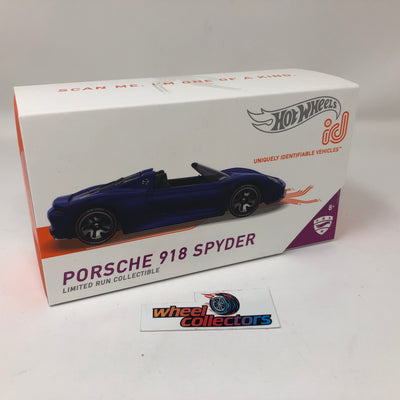
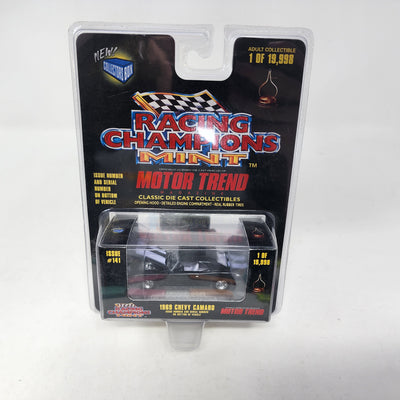
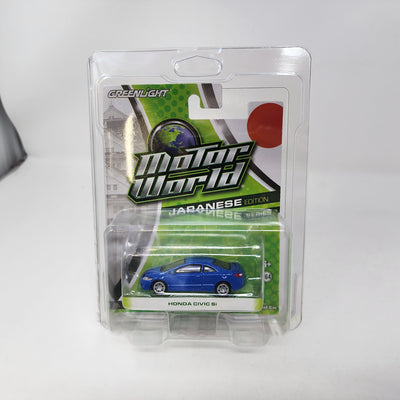
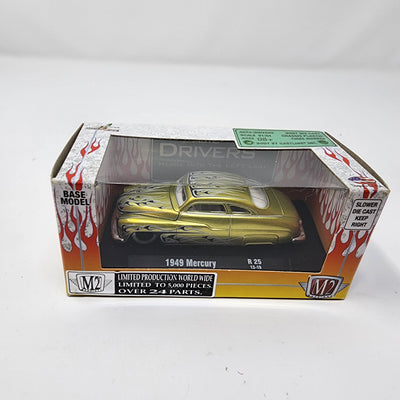
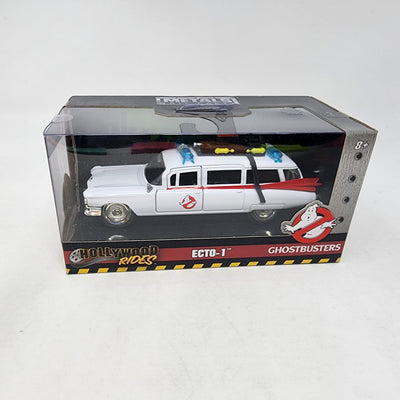
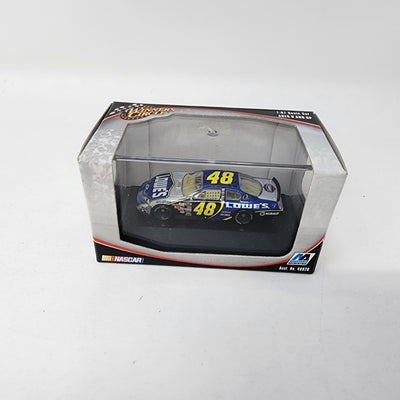
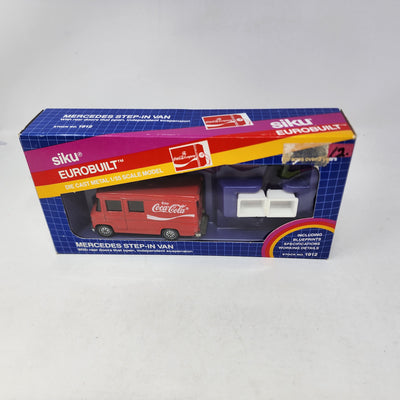
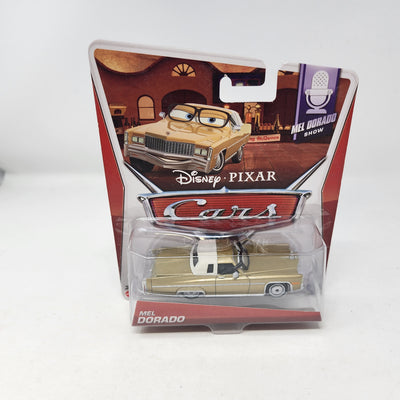
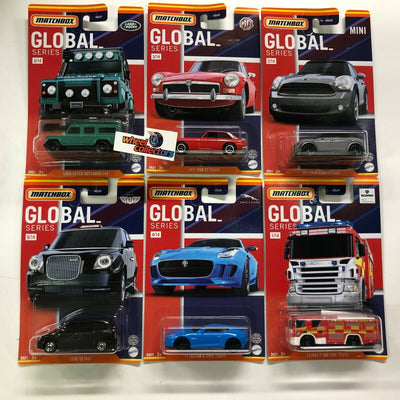


Hello David. I love it when you pull out your old toys and give us a history lesson! :) That black BMW 5 series is one I have wanted for my collection for a very long time and I cannot find an affordable one on Ebay. I didn’t realize that casting did not receive a wide release in the USA but it certainly explains why they are difficult to locate here in the states. I hope you continue to show us old toys in the future.
I think its a great idea. It takes people back in time,so to speak. It joggles memories. People can remember why they collected cars,and the meanings for why. I have approximently 4000 of different types,such as Hotwheels Johnny Lightning,Matchbox,etc,etc. You get the idea. One of my favorite years was 1972 Lesney. I think somewhere in that era give or take Matchbox was batteling HotWheels on tire design. The fastest tire. It in summary is a great idea if you did sprinkle a bit of past History.
Leave a comment